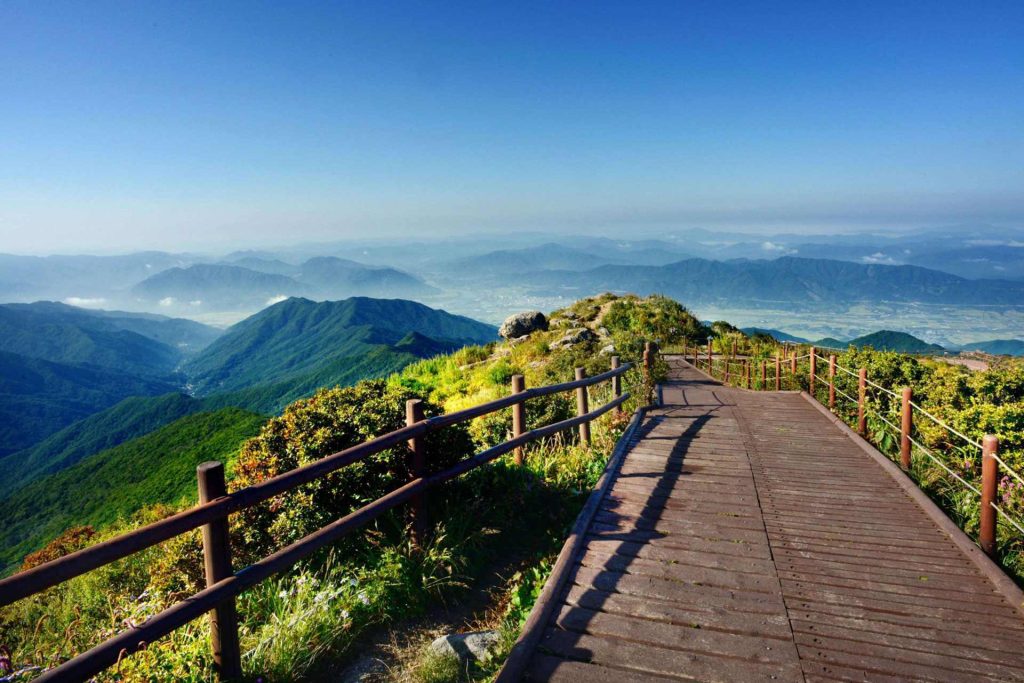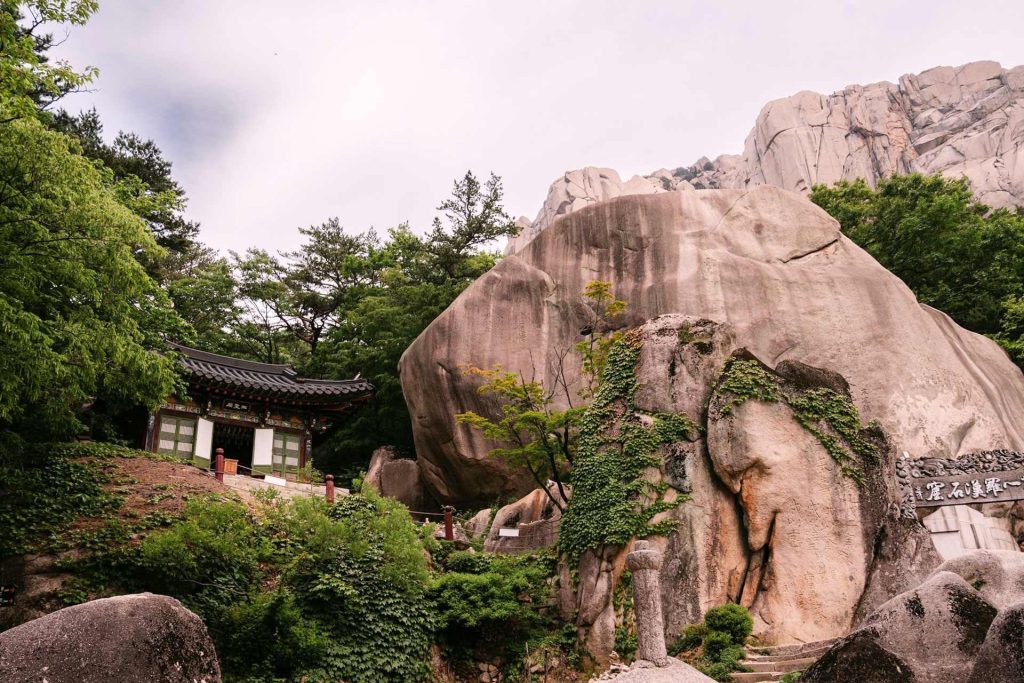Jirisan National Park, one of the largest and oldest in South Korea, offers a unique experience for those seeking breathtaking landscapes, traditional culture, and countless outdoor activities. Located in the Jirisan mountain range, this park is renowned for its towering peaks, ancient temples, and rich biodiversity that invites exploration at every turn. With trails weaving through deep valleys and vegetation-covered hills, this South Korean national park is a must-visit for hiking and nature enthusiasts. Get ready to traverse its paths, enjoy its wildlife and flora, and connect with the culture and serenity of Korea’s mountains.
Content
- 1 Information about Jirisan National Park
- 2 How to Get to Jirisan National Park
- 3 Geography of Jirisan
- 4 Flora of Jirisan National Park in South Korea
- 5 Fauna of Jirisan
- 6 Recommended Hikes and Activities
- 7 What to See and Do in Jirisan National Park
- 8 Culture and Local Communities in Jirisan
- 9 Gastronomy Around Jirisan
- 10 Accommodations in Jirisan National Park
Information about Jirisan National Park
History of Jirisan National Park
Jirisan National Park (in Korean: 지리산국립공원) was designated in 1967 as the first national park in South Korea. Over the centuries, it has held great significance for both wildlife and Korean culture, featuring historic Buddhist temples and pilgrimage routes that traverse its mountains. These lands have witnessed a harmonious coexistence between humans and nature and remain a refuge for many endangered species.
Location and Access
Jirisan spans three provinces: South Gyeongsang, South Jeolla, and North Jeolla. With its vast landscapes, the park encompasses diverse ecosystems ranging from rivers and valleys to towering mountains. It is easily accessible from several major cities, making it a popular destination for both locals and international visitors.
Best Time to Visit Jirisan National Park
The park offers different landscapes depending on the season. Spring and autumn are the best times to enjoy its nature, with cherry blossoms in April and the changing leaf colors in October. Summer is also popular, though warmer, and winter attracts those seeking snow-covered scenery.
How to Get to Jirisan National Park
From Seoul
There are direct buses from Seoul’s bus station to the park’s entry points, such as Gurye and Namwon. The journey takes approximately 4 hours.
From Busan
From Busan, you can also take direct buses to the park’s main access points. This trip takes about 3 hours.
From Jeonju
Jeonju is a nearby city from which you can reach the park in less than 2 hours by bus. This route is convenient for those wanting to explore both the historic city and Jirisan’s nature.
From Gwangju
Gwangju is well connected to the park, with several transport options that take around 2 hours.
Geography of Jirisan
Jirisan is famous for its complex mountain system, which includes several prominent peaks, with the highest being Cheonwangbong, rising to 1,915 meters above sea level. Besides its mountains, the park features numerous deep valleys and rivers, such as the Seomjin River, which flows through its lowlands.
Flora of Jirisan National Park in South Korea
The park is home to a rich diversity of plants, many of which are unique to the region. In the park’s lower areas, you’ll find dense forests of pine, oak, and maple trees, while higher altitudes are populated by alpine plants adapted to cold, windy conditions.
Fauna of Jirisan
Among the park’s most notable fauna is the Asian black bear (
Ursus thibetanus), a protected species inhabiting the park’s remote forests. Deer, foxes, and a variety of birds, such as golden eagles and Korean pheasants, are also common sightings.
Recommended Hikes and Activities
Jirisan National Park is a paradise for hikers, with trails of varying levels that offer stunning views. Popular routes include the ascent to Cheonwangbong Peak and walks through the Baemsagol Valley. Additionally, visitors can enjoy bird watching, camping in mountain shelters, or simply relishing the tranquility of nature.
What to See and Do in Jirisan National Park
Cheonwangbong Peak
It is the highest point of the park and the Sobaek mountain range, making it one of the main destinations for hikers. The panoramic views from the summit are breathtaking, especially at sunrise.
Hwaeomsa Temple
This ancient Buddhist temple, located on the mountain’s slopes, is famous for its architecture and historical relics. It’s an ideal place for reflection and learning about Korea’s religious history.
Baemsagol Valley
With its waterfalls and natural pools, Baemsagol Valley is one of the most picturesque spots in the park. It’s perfect for a leisurely walk and cooling off on warm summer days.
Nogodan Observatory
Located at a high altitude, Nogodan Observatory offers spectacular views of the surrounding mountains and is a popular spot for those looking for a less strenuous hike than Cheonwangbong.
Chilseon Waterfalls
These seven waterfalls, hidden in Chilseon Valley, are a natural wonder worth exploring. The trail leading to them passes through lush landscapes, offering a unique experience.
Dulle-gil Trail
This long-distance trail circles much of the park and is divided into several sections. It’s ideal for those who want to cover long distances through forests and local villages.
Culture and Local Communities in Jirisan
Temples and Religious Sites
Jirisan National Park is home to several ancient temples, with Hwaeomsa Temple being the most renowned. Many of these temples are significant centers of religious and cultural activity, offering visitors a glimpse into Korea’s Buddhist traditions.
Traditional Villages and Local Culture
The communities near the park have preserved their traditional customs over centuries. Visitors can learn about rural Korean life, enjoy local hospitality, and participate in cultural activities.
Gastronomy Around Jirisan
Traditional Korean Food in the Region
Jirisan is known for its local cuisine, which includes dishes like ssambap (rice wrapped in leaves), spicy stews, and the famous Jirisan tea made from herbs grown in the mountains. Local products such as mushrooms and ginseng are also highly valued.
Mountain Dishes and Local Products
Restaurants in the villages near the park offer traditional meals, many of which use fresh mountain ingredients like wild herbs and roots. Don’t miss the opportunity to try authentic Korean mountain cuisine.
Jirisan Tea and Other Local Products
The region is famous for its tea, especially green tea, cultivated on the mountain slopes. You can also find products made with medicinal herbs and roots that grow in the park’s highlands.
Accommodations in Jirisan National Park
Mountain Shelters
For hikers planning to stay overnight in the park, mountain shelters are the most popular option. These shelters offer basic yet comfortable accommodations in the heart of nature.
Nearby Towns: Gurye-gun, Namwon, Hadong
Nearby towns like Gurye-gun, Namwon, and Hadong have various accommodation options ranging from guesthouses to small hotels. They are an excellent base for exploring the park and its surroundings.
Temple Stay Accommodation
A unique experience in Jirisan is the templestay, where visitors can spend the night in a Buddhist temple, participate in monks’ daily activities, and enjoy the serenity of these ancient retreats.
Recommended parks: National Parks of South Korea.





